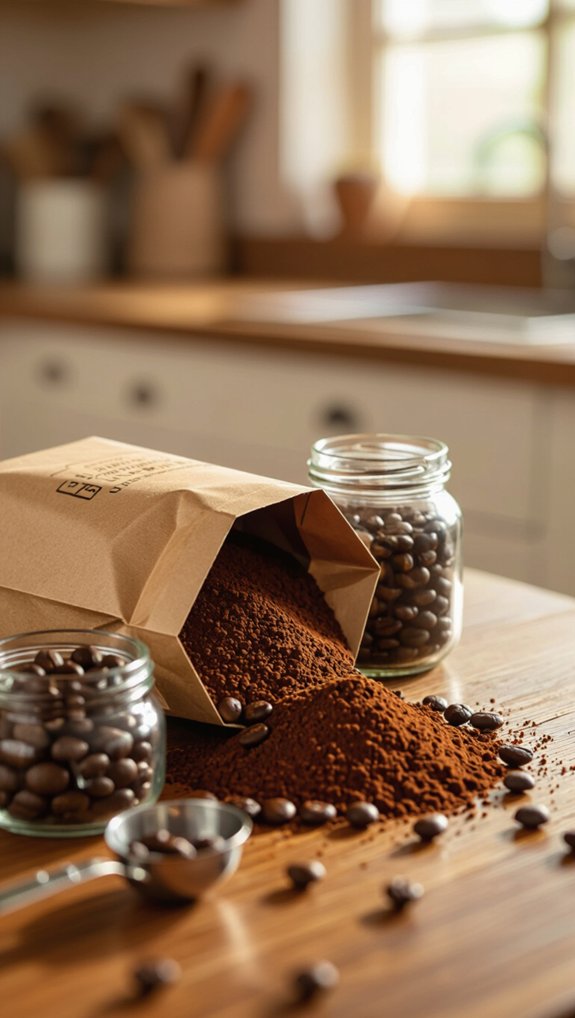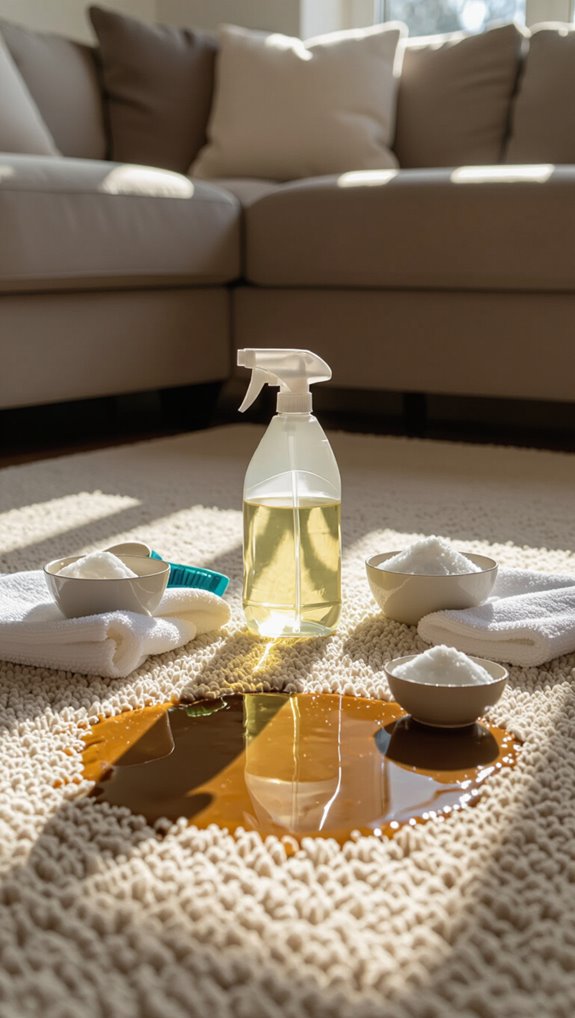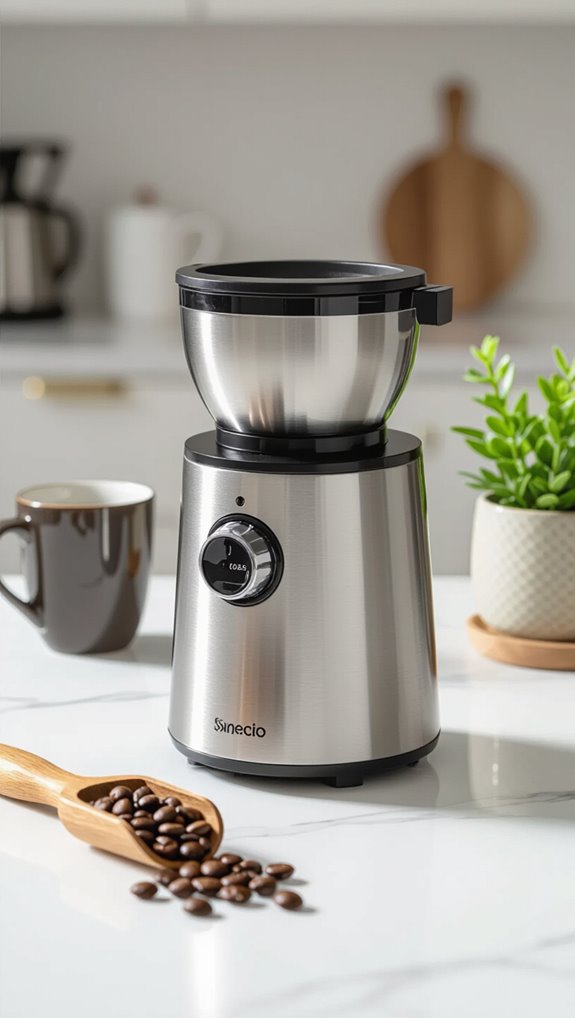According to FDA regulations, coffee beans—like most food products—are allowed to contain trace amounts of insect fragments, with acceptable defect levels permitting an average of 10% insect-infested or insect-damaged beans per sample. This startling fact raises an urgent question for millions of coffee drinkers: could there actually be roach parts in my morning cup?
The truth is that coffee beans pass through numerous stages where contamination is possible, from tropical farms to processing facilities and storage warehouses. While the roasting process eliminates most health concerns, understanding what’s really in your coffee and how to protect yourself matters for both peace of mind and quality.
In this post, we’ll explore the facts about insect contamination in ground coffee, explain FDA safety standards, reveal how prevalent this issue actually is, and share practical steps you can take to minimize exposure and ensure you’re brewing the cleanest possible cup.
Table of Contents
Are there roaches in ground coffee?

Are there roaches in ground coffee?
Yes, roaches and other insect fragments can indeed be found in ground coffee, though not intentionally. The FDA actually permits up to 10% of coffee beans to have insect damage or infestation.
These tiny fragments typically enter during storage, where large bean stockpiles can attract insects. Most contamination happens before roasting, when beans sit in warm, moist environments. Bulk coffee storage creates prime conditions for insect infestations that can end up ground into your morning brew.
Don’t worry, though—these trace insect parts are considered safe and won’t harm your health. Purchasing whole beans and grinding at home can significantly reduce your exposure to unwanted insect extras in your morning brew.
What insect parts end up inside?
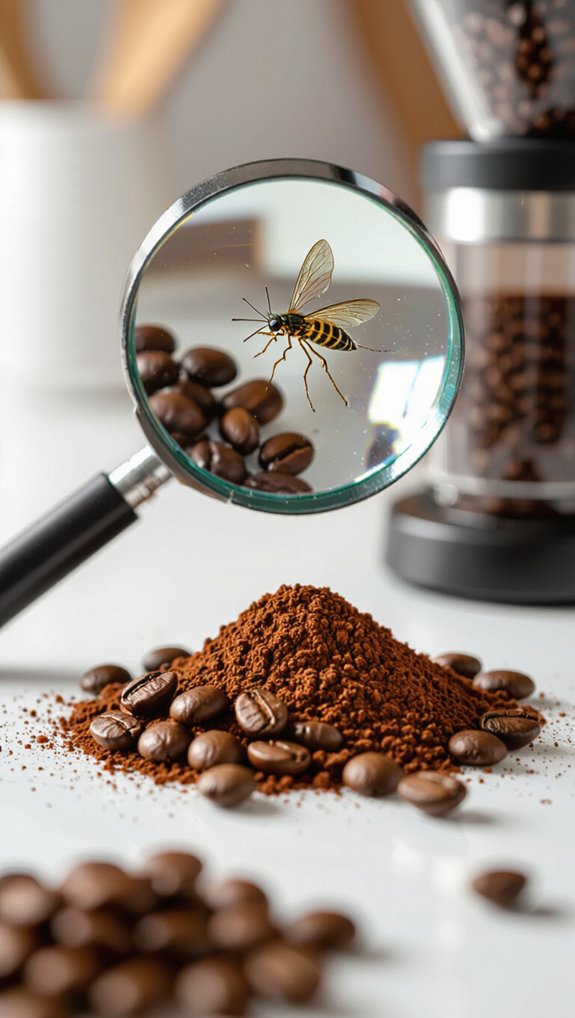
The creepy crawly truth is that various insect parts can end up inside your ground coffee, ranging from entire beetle bodies to microscopic fragments like legs, wings, and exoskeleton pieces. Coffee berry borer beetles and weevils are the most common culprits, leaving behind tiny remnants during processing. These fragments might include whole insect bodies, broken wing segments, detached legs, and even microscopic eggs or larvae. FDA regulations confirm that agricultural products naturally contain some level of insect contamination during global production and processing cycles.
Detection methods like visual inspection and microscopic analysis can reveal these unwelcome additions. Don’t panic—the FDA allows up to 10% of beans to be insect-infested, which means most coffee is still safe to drink.
Is it safe to drink anyway?

Is it safe to drink anyway?
Surprisingly, coffee with a few microscopic insect fragments is generally safe to drink for most people. The FDA sets strict regulatory limits on food contaminants, and the tiny bits found in coffee won’t harm your health. Regulatory quality control ensures that coffee undergoes rigorous testing before reaching consumers.
Most fragments come from coffee berry borers, not cockroaches, and roasting significantly reduces potential pathogen risks.
However, folks with shellfish allergies should be cautious. Cockroach fragments contain tropomyosin, an allergen that can trigger reactions like swelling or itching. If you’re sensitive, opt for whole beans or carefully sourced coffee to minimize potential risks.
How common is this in brands?

After learning about potential health impacts, you might wonder just how widespread cockroach contamination is across different coffee brands. The reality is that most ground coffee contains trace insect fragments, but don’t panic yet. Here’s what you should know:
- Industrial processing makes complete insect removal nearly impossible
- FDA regulations allow up to 10% insect-damaged beans
- Pre-ground coffee faces higher contamination risks than whole beans
Whole bean varieties undergo more rigorous quality checks, reducing the likelihood of significant roach presence. While unsettling, these minimal fragments pose minimal health risks and are essentially unavoidable in commercial coffee production.
Reduce risk with whole coffee beans
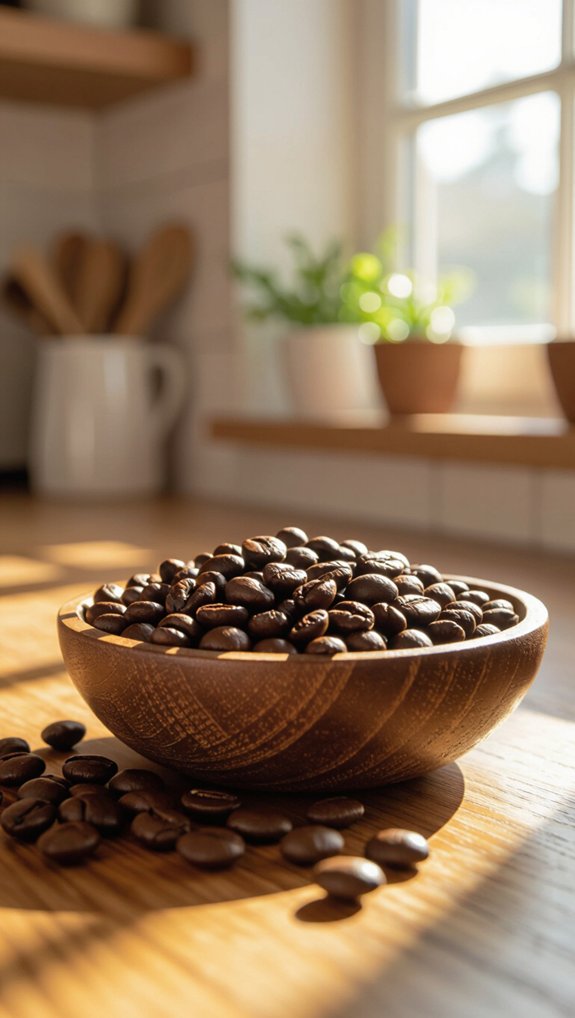
Whole coffee beans offer a powerful defense against roach contamination that pre-ground coffee simply can’t match. By keeping beans intact, you’ll significantly reduce pest risks and maintain superior flavor quality.
| Storage Method | Pest Prevention |
|---|---|
| Airtight Containers | Blocks insect entry |
| Cool, Dry Locations | Minimizes moisture attraction |
| Vacuum Sealing | Prevents contamination |
Strategic bean storage involves multiple layers of protection. Clean storage areas, use sealed containers, and grind only what you’ll immediately consume. These simple practices create an unwelcoming environment for roaches while preserving your coffee’s delicious characteristics. Remember, prevention is always more effective than dealing with an existing infestation.
Buy smarter: defect and quality cues

Protecting your coffee from roaches starts long before you bring beans home, and smart buying is your first line of defense.
Quality coffee isn’t just about taste—it’s about safety too. Look for these critical defect indicators:
- Inspect bean uniformity: Healthy beans should have a consistent blue-green to yellow-green color.
- Check for physical damage: Avoid beans with holes, cracks, or unusual discoloration.
- Watch for foreign matter: Reject samples with visible stones, sticks, or shell fragments.
These visual cues help you dodge potential roach-harboring, low-grade coffee before it reaches your kitchen.
Store coffee to block kitchen pests
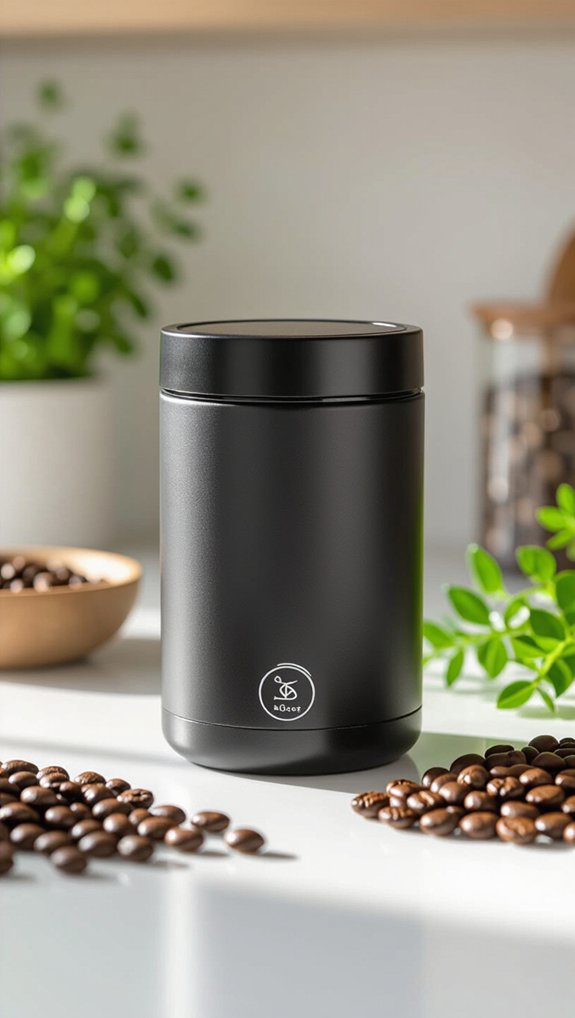
Savvy coffee lovers know that proper storage is your ultimate defense against roaches invading your precious beans. Creating a roach-resistant environment means controlling moisture, sealing entry points, and maintaining cleanliness.
| Storage Tactic | Pest Prevention | Effectiveness |
|---|---|---|
| Airtight Containers | Block Entry | High |
| Regular Cleaning | Remove Attractants | Medium |
| Humidity Control | Reduce Moisture | High |
Sealed containers with tight lids are critical. Store coffee in cool, dry places away from potential contamination. Clean storage areas frequently, wiping down surfaces and checking for signs of pest activity. Remember, preventing roaches starts with eliminating their access to food, water, and shelter in your coffee storage space.
Clean grinder and brewer like this
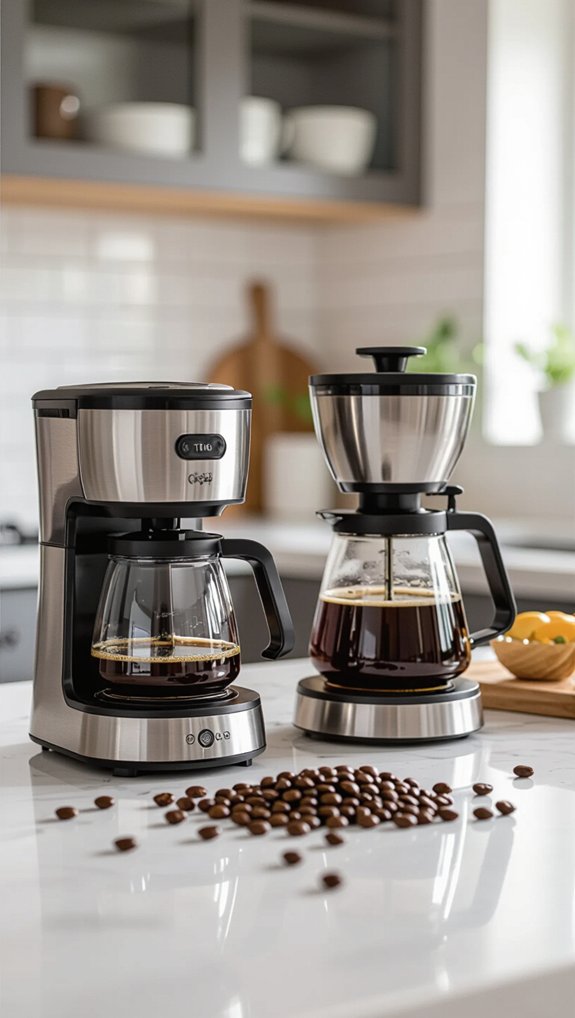
After sealing your coffee storage to block pests, your next defense is maintaining squeaky-clean coffee equipment. Regular cleaning prevents roach infestations and ensures delicious brew quality. Follow these essential steps:
- 😱 Disassemble grinder and brewer completely
- 🧼 Scrub all removable parts with hot, soapy water
- 🌟 Sanitize with vinegar solution to kill potential pest eggs
Dry components thoroughly before reassembling. Avoid moisture that attracts roaches.
For grinders, carefully clean burrs and remove all coffee residue. With brewers, descale internal mechanisms using a vinegar-water mixture. Your vigilance keeps your coffee machine pest-free and your morning cup perfectly delicious.
Brew tips for peace of mind

While roaches can turn your beloved morning brew into a nightmare, I’ll share brewing techniques that’ll keep those pesky insects far from your coffee.
Use freshly ground beans from sealed containers, and always clean your brewing equipment thoroughly after each use.
Hot water above 140°F kills potential roach eggs and bacteria, so brew at high temperatures.
Consider single-serve methods like pour-over or French press, which minimize storage time and exposure.
Rinse equipment immediately, dry completely, and store in sealed, elevated cabinets away from moisture and warmth – your first defense against unwelcome coffee crashers.
When to toss your coffee grounds
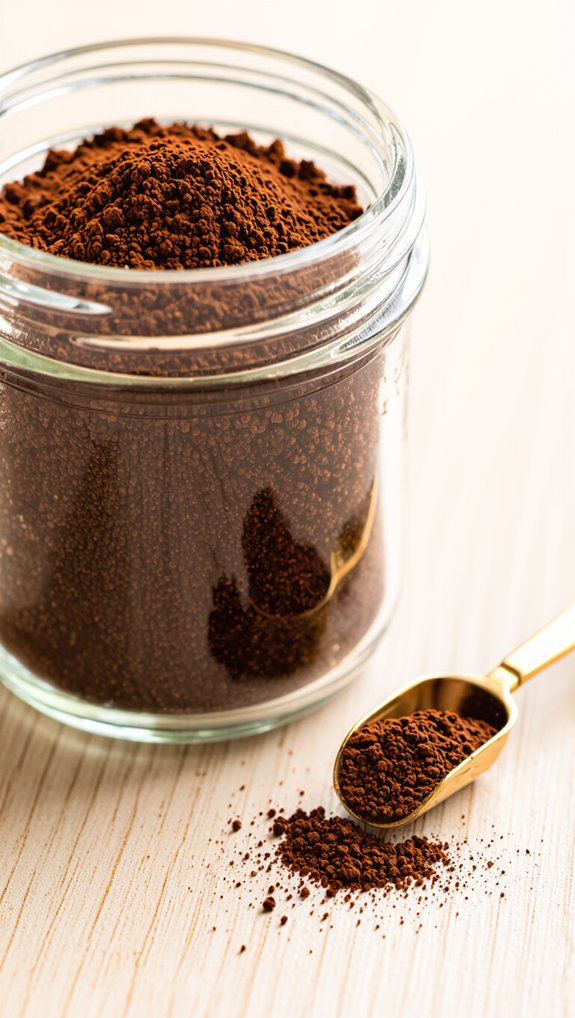
Knowing exactly when to toss your ground coffee prevents disappointing brews and potential health risks. Coffee lovers, listen up! Here’s when to bid farewell to your beloved grounds:
- Stale aroma: When those rich, inviting scents fade into flat, lifeless odors
- Visible changes: Clumping, mold growth, or suspicious discoloration signal it’s time to trash
- Taste test failure: Bitter, dull, or sour flavors mean your coffee’s quality has nosedived
Follow these guidelines: toss ground coffee after two weeks at room temperature, evaluate vacuum-sealed packages past six months, and always prioritize taste and safety over saving a few pennies.
Frequently Asked Questions
Can Roaches Survive the Coffee Roasting and Grinding Process?
No, roaches can’t survive coffee roasting. Temperatures over 350°F instantly kill them, and the 12-15 minute roasting process completely destroys their bodies, ensuring that any insects are incinerated before reaching your cup.
Do Coffee Farms Struggle With Cockroach Infestations More Than Others?
Based on agricultural research, coffee farms don’t struggle significantly with cockroach infestations. The coffee berry borer beetle is far more destructive, and farmers prioritize managing these specific beetle threats over minor cockroach concerns.
How Quickly Do Roaches Contaminate Coffee Beans and Grounds?
Roaches can contaminate coffee beans almost instantly during harvesting, especially in tropical regions. They’ll infiltrate bean piles quickly, and industrial processing often means insect fragments are ground up with coffee, potentially reaching 4-10% of total volume.
Are Some Coffee Origins More Prone to Roach Problems?
Yes, coffee origins with humid, tropical climates are more prone to pest issues. However, roaches aren’t typically the primary concern; beetle infestations are more common. Proper storage and processing significantly reduce any insect contamination risks.
What Natural Methods Repel Cockroaches From Coffee Storage Areas?
I’ll deter roaches from my coffee storage by strategically placing coffee grounds, citrus peels, and bay leaves, while keeping the area clean and dry. Vinegar sprays and essential oils provide extra protection against these unwanted kitchen invaders.
In Conclusion
While the question “Are roaches in ground coffee?” might sound alarming, the reality is far less concerning than you’d think. Yes, trace amounts of insect fragments can make their way into ground coffee during processing, but these microscopic particles are carefully regulated by the FDA and pose no health risks. The key is being a smart coffee consumer—buy quality whole beans, store them in airtight containers, and grind only what you need for maximum freshness and minimal contamination.
Your morning coffee ritual remains perfectly safe and enjoyable. By choosing reputable brands, using proper storage methods, and investing in a good grinder, you’re already taking the best preventive steps. If you’re looking to upgrade your coffee setup and ensure the freshest possible brew every time, check out our coffee machine reviews to explore well-tested, highly-rated options that can elevate your entire coffee experience.
Don’t let microscopic concerns overshadow your love for that perfect cup. Stay informed, trust quality sources, and keep enjoying your daily caffeine fix with confidence.

